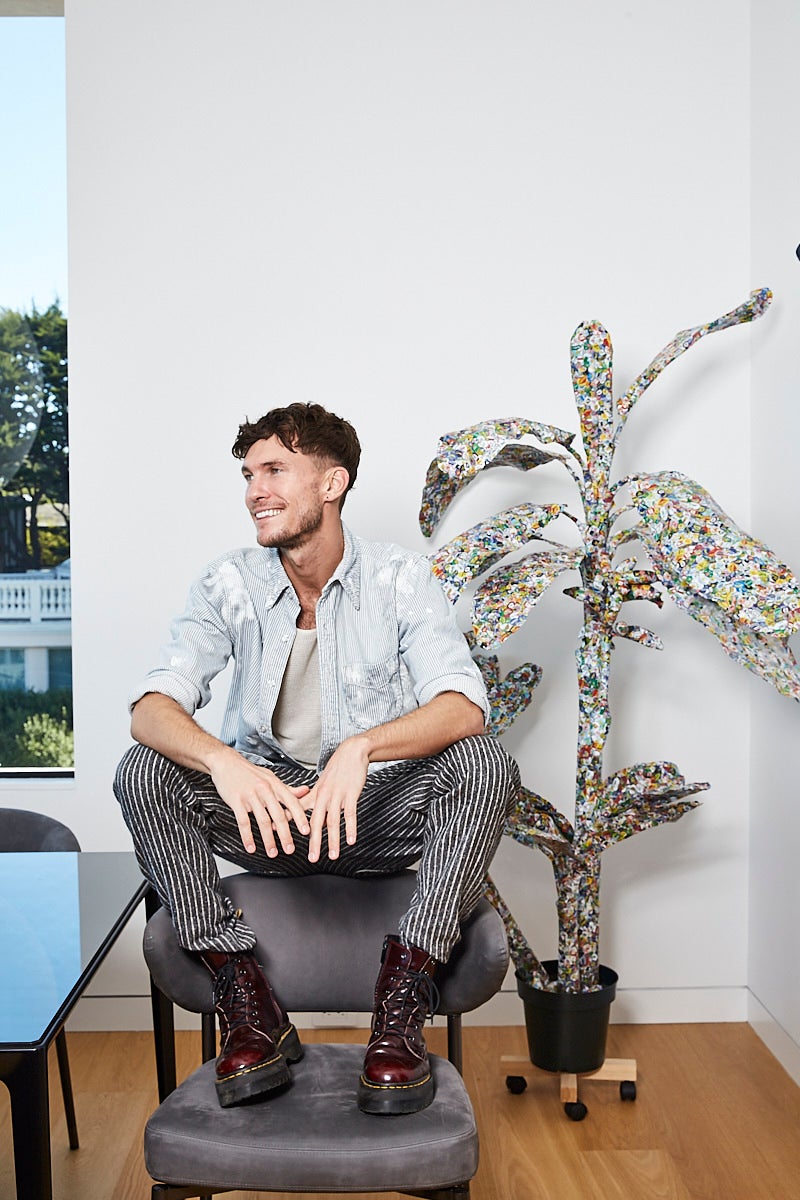From a young age, an interest in design was fully present for Sean Leffers—he remembers happening upon a stack of shelter magazines while on vacation at his grandparents’ house and instantly forgetting about all of the regular festivities the family had planned. The circumstances, however, weren’t in his favor—after moving from San Francisco to Fort Wayne, Indiana, when he was 10 years old, it would be a while before he returned to his dreams of design.
“Thinking about why I didn’t take what was clearly a passion and run with it and go to design school immediately, I think it’s some form of internalized homophobia about the fact that design was, in my mind—and maybe in broader cultural perspectives in the ’90s—more of a woman’s job or a gay man’s job, and the fact that I lived in a pretty conservative environment in the midwest that was pretty homophobic, making choices that would signal that you were gay or had more feminine interests were not something that felt safe,” Leffers tells host Kaitlin Petersen on the latest episode of the Trade Tales podcast.
Instead, Leffers would escape into the world of books—a passion that would provide a more literal escape years later, when a job at the avant garde publishing house Taschen took him to Los Angeles. There, Leffers would reignite his interest in art and design.
With his then-partner working in real estate, Leffers began flipping houses on the side, which allowed him to call upon some rudimentary skills gained from a summer doing odd jobs on a construction site in high school. Soon, he was working on spec houses—a job so rooted in anonymity that it pointed him toward a career in residential interiors. “You’re designing for a guesstimated person who may or may not show up and might be completely different from who you thought was going to buy this type of house,” he says. “I realized that I really wanted to focus on creating special places that are an extension of a person that I really respect and admire.”
Leffers started small, shaping up his own home and putting out feelers to interested family and friends. As he has built out his firm, he hasn’t let go of the premise that got him started in design: choosing only clients, co-workers and projects he loves and believes in. (He’s built such a tight-knit team that most of them followed him when he relocated his business from San Francisco to Los Angeles six weeks ago.) In this week’s episode, Leffers expands on where his purpose-driven design has led him, and how sharing responsibility with his team members has helped him shoulder the load.
Listen to the episode and check out some takeaways below. If you like what you hear, subscribe on Apple Podcasts or Spotify. This episode was sponsored by BuildLane and Gabby.
A team of leaders
As he began to grow his firm, Leffers found himself striving to know and be involved in everything that happened in his business. Soon, he realized he was limiting his employees’ growth and stretching himself too thin. “Now, everybody has their area and needs to have total responsibility for that area,” he explains of his new take on what leadership looks like. “Yes, I’m ultimately responsible for everything, but everyone on the team shares that level of responsibility, and that’s been transformative.”
The shift wasn’t without its growing pains, but Leffers says the transformation has been for the better: “Being really flexible, cultivating openness, realizing I don’t have the answer to everything—it’s this tricky balance between having to have the bravado to walk into a meeting and have total confidence, but then also realizing that your real power comes from saying, ‘I actually am just figuring everything out like everybody else, and how are we going to figure this out together?’”
Bringing your worldview into your work
While working on a space in the San Francisco Decorator Showcase, Leffers was mulling whether the fictional child whose bedroom he was assigned was a boy or a girl. His own fixation on the child’s gender got him thinking about the potentially negative ramifications of making such a decision for a child who may later decide on a different gender expression, and he took the opportunity to create a space that wouldn’t pigeonhole someone into a gender they don’t affiliate with—a decision that sparked a larger community discussion and incurred online criticism in equal parts. “On social media, I was getting negative comments every single day for a few months, [including] some people I followed that were also into the design world that thought I was overly politicizing an issue that didn’t need to be brought into childhood,” he says. “[But] when you see a lot of things you don’t like about the world, it makes it much more important for you to feel like you’re doing something about it. I’m still very proud that we did that—I would do it again in a second.”
Digging deeper
One of the designer’s current projects is a decidedly high-concept piece—his deconstructivist house on Powder Mountain in Utah, designed to feel like a future home on Mars that evokes nostalgia for the natural environment that has been destroyed on Earth. To handle projects with a similarly large scope, Leffers digs into the client’s deeper ambitions through a series of conversations during the ideation phase of his design process. “You’re really getting with someone and understanding what drives them, who they are and also who they would like to become,” he says. “That’s where we use our emotional intelligence toolkits to probe and see which directions we need to take things, what’s going to be exciting to explore.”





























